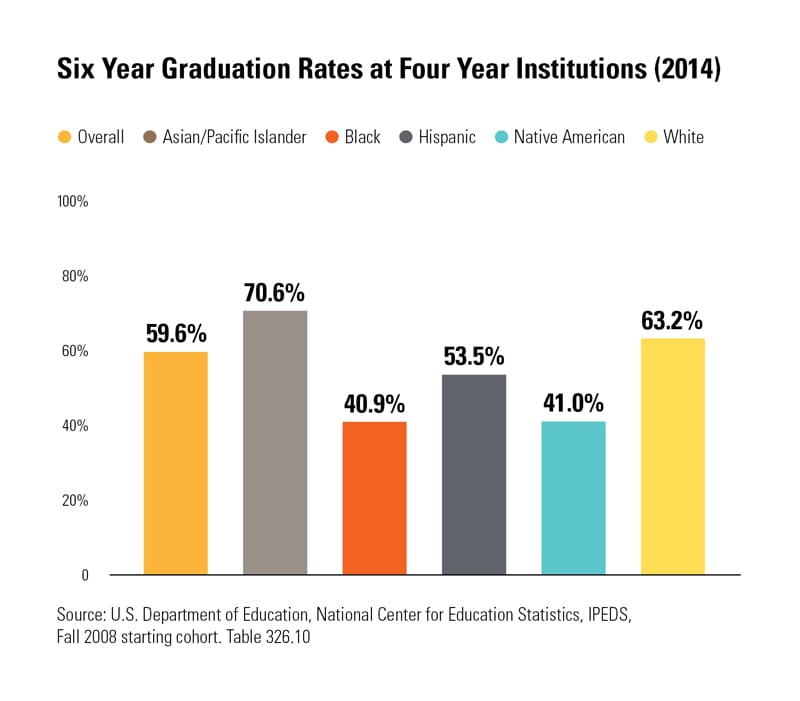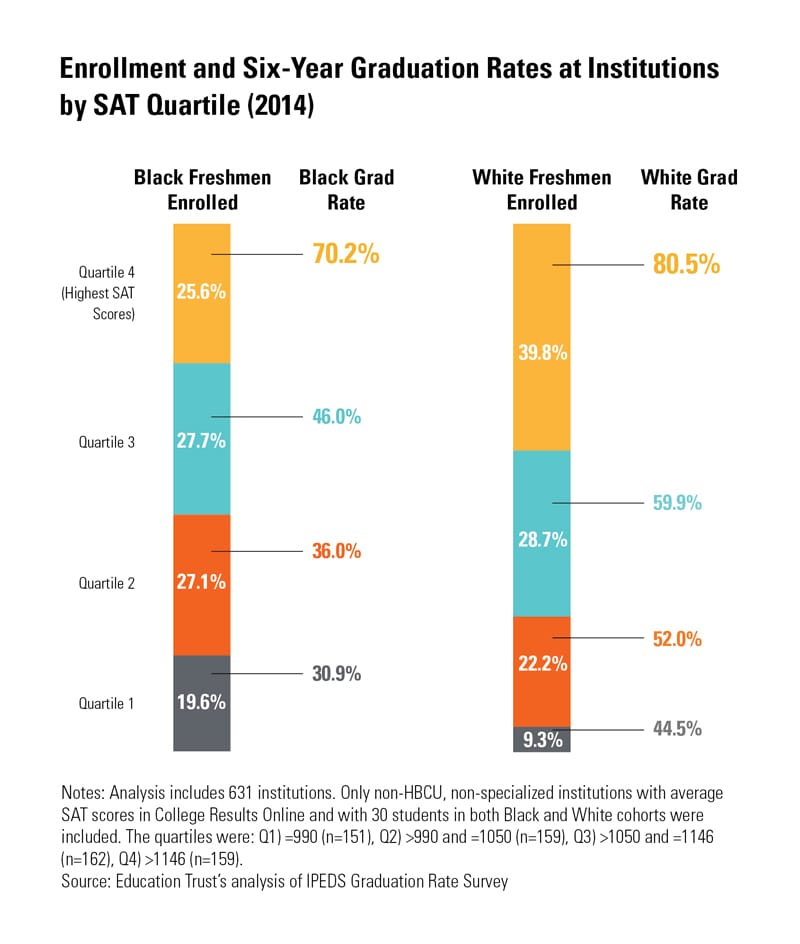A Look at Black Student Success
More Black students are enrolling in four-year colleges and universities than ever before. But what happens to these students…

More Black students are enrolling in four-year colleges and universities than ever before. But what happens to these students after they arrive on campus? Do they graduate?
Only about 4 in 10 (41 percent) Black students who start college as first-time, full-time freshmen earn bachelor’s degrees from those institutions within six years — a rate 22 percentage points below that of their White peers.
This completion gap has multiple causes and closing it will require a three-pronged strategy:

Completion gaps between Black and White students account for about two-thirds of the national gap in completion between these groups. Closing institutional gaps would produce nearly 12,000 more Black graduates each year and considerably reduce the national completion gap.
To do this, institutional leaders must be intentional about student success. And there are institutions that are leading the way in equitably graduating their students.
Take the University of North Carolina at Greensboro, for example. At UNCG there is no completion gap between Black and White students. What’s even more impressive is that when compared with comparable institutions that enroll similar types of students (see CollegeResults.org), UNCG’s Black student graduation rate is 18.6 percentage points higher.
Unfortunately, there are also institutions with woefully low and inequitable outcomes for Black students. Among these is Youngstown State University, where fewer than 1 in 10 Black first-time, full-time students complete a bachelor’s degree within six years of enrolling, while White students graduate at nearly five times that rate.
But just closing the gap at individual institutions is not enough to erase the national completion gap. To do so, more Black students need the opportunity to attend selective institutions.
About one-quarter of all Black freshmen enroll at selective institutions that tend to have more resources and good completion rates, but two-fifths of their White peers enroll at these institutions. On the other hand, nearly 1 in 5 Black freshmen enroll at institutions that aren’t selective, have fewer resources, and poor completion rates. Only 1 in 10 White freshmen attend these types of institutions.

Closing the national completion gap between Black and White students will not be possible if these stratified enrollment patterns are not addressed. Institutional leaders at selective colleges and universities must enhance their outreach and recruitment efforts to ensure more Black students have opportunities to attend these institutions.
Many will argue that differences in graduation rates are caused by differences in student preparation and other factors that are outside an institution’s control. For years though, we have shown that argument to be false.
Similar colleges serving similar students can produce vastly different outcomes, proving that what institutions do with the students they enroll is absolutely critical. Take, for example, these two peers: Francis Marion University and Delta State University. These universities have similar student bodies with similar levels of preparation, but very dissimilar outcomes for their Black students.
Student success can only be improved when it is the top priority for institutional leaders. This report, and others from our higher education team, all show that institutions committed to improving graduation rates for students from low-income families and students of color can.